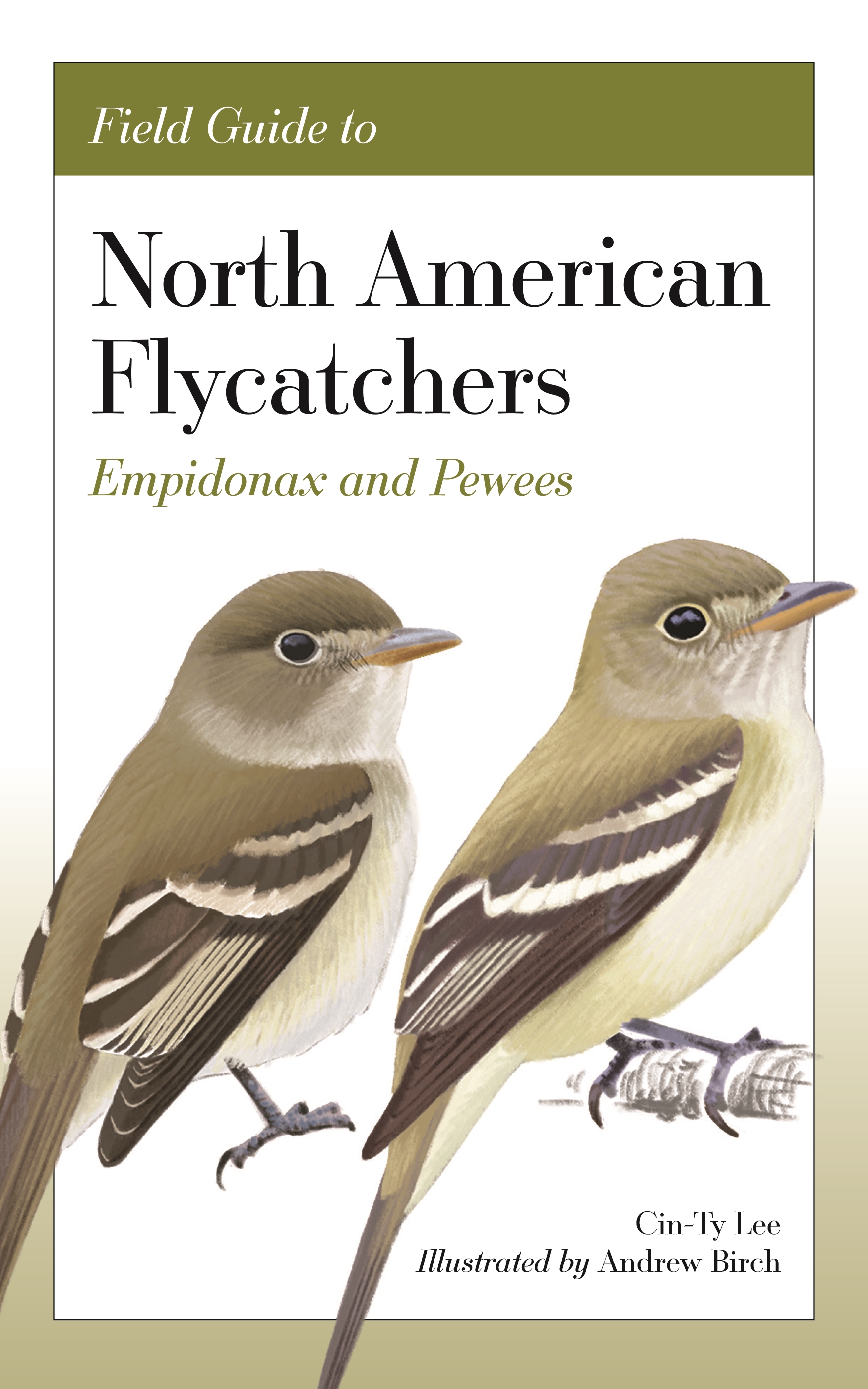Field Guide to North American Flycatchers
- Field Guide to North American Flycatchers by Cin-Ty Lee (Princeton University Press, 2023).
- 168 pages, illustrated throughout.
- ISBN: 9780691240626. Pbk, £16.99.
- Buy at BirdGuides Bookshop from £14.99
As a few recent extreme vagrants and firsts for Britain have shown, among the most difficult identification challenges in birding are the 'empids' – the small American tyrant flycatchers of the genus Empidonax. Their brownish-green body plumage colours and prominent wing-bars are similar for almost all species – and they're very similar to the peewees of the genus Centopus.
To date, five species have occurred in the WP: one Centopus (Eastern Wood Peewee twice in the Azores) and four Empidonax (Acadian twice in Iceland and Britain, Alder in at least three countries, Yellow-bellied once in Britain and Least once in Iceland). Most are migratory and others are likely to occur. Almost every time one appears on this side of the pond, its minutiae are debated at length before a 'clean' identification is made.
This thorough pocket guide is here to help. Presenting each in a methodical and novel manner, it takes you deeper than the most text-heavy field guide; deeper even than Kenn Kaufman's Advanced Birding guide. All 18 species in two genera recorded in North America are featured and copiously illustrated. After a taxonomic breakdown, the author's concept of 'holistic identification' is explained – i.e. only a combination of several subtle field marks will identify a species for certain.
Species are grouped and compared according to crown shape, head size, forehead angle, relative bill length, lower mandible colour, tail length, primary projection, wing-bar contrast, wing panel contrast, upper/underpart contrast, eyering shape and overall colouration. A useful field-mark matrix is shown to compare all these factors in one grid, and visual similarity is also represented in a graphic.
A third of the way through, the species accounts begin. Familiarity with reading sonograms is helpful, but seasonal range, a general description and accurate and 'jizzy' colour illustrations of each are also present, along with confusion species to scale.
Holding your hand through the entire process, the guide makes it possible to identify almost any empid and peewee that might cross your path, making a birding visit across the Atlantic or a twitch to an unidentified flycatcher on a windswept promontory over here much more satisfactory. This takes a scientific approach to a very nuanced procedure and if your thing is separating LBJs, it's now a bit easier to chance your hand at 'Little Green Jobs' as well. Though it's still helpful if they call.



